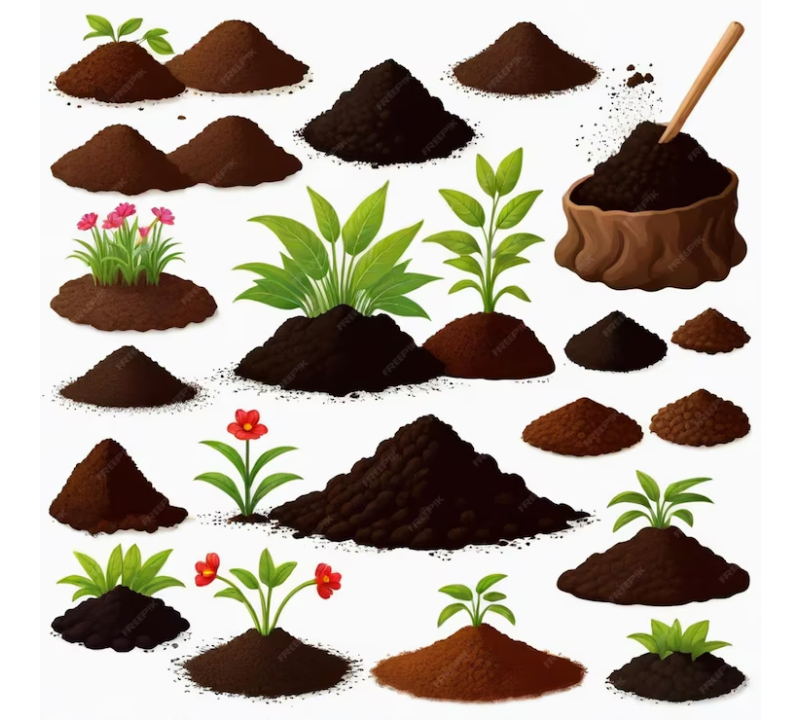Preparing garden soil for spring is crucial for ensuring a thriving and productive garden. As winter gives way to warmer temperatures, it’s the perfect time to focus on soil preparation, which lays the foundation for robust plant growth. This involves assessing the soil’s condition, understanding its components, and making necessary improvements. By addressing soil health and ensuring it’s properly enriched and aerated, gardeners can set the stage for a vibrant and bountiful growing season. Effective soil preparation not only enhances plant health but also boosts the overall yield and quality of your garden produce.
Key Components Of Garden Soil For Optimal Spring Growth
To achieve optimal spring growth, garden soil must have the right balance of key components. These include soil texture, structure, and organic matter. Loamy soil, which combines sand, silt, and clay in a balanced proportion, is ideal as it provides good drainage and nutrient retention. Organic matter, such as compost or well-rotted manure, is essential for enriching soil fertility and improving its texture. Additionally, soil structure, which affects root growth and water infiltration, should be crumbly and well-aerated. Ensuring these components are in proper balance will set the groundwork for a successful spring planting season.

Understanding Ph Levels In Your Garden Soil
Soil pH plays a significant role in determining plant health and nutrient availability. Most garden plants thrive in slightly acidic to neutral soil, with a pH range of 6.0 to 7.0. Testing your soil’s pH is essential for understanding its current state and making necessary adjustments. Soil testing kits are readily available and provide a quick and easy way to assess pH levels. If your soil is too acidic, adding lime can help raise the pH, while sulfur can lower it if the soil is too alkaline. Maintaining the right pH ensures that plants can effectively absorb essential nutrients from the soil.
How To Test And Improve Garden Soil Drainage?
Proper drainage is vital for preventing waterlogged soil, which can lead to root rot and other issues. To test soil drainage, conduct a simple percolation test by digging a hole and filling it with water. If the water drains too slowly, the soil may have poor drainage. Improving soil drainage can be achieved by incorporating organic matter, such as compost or aged manure, which helps to increase soil porosity. Additionally, creating raised beds or incorporating sand into the soil can enhance drainage. Ensuring good drainage helps maintain healthy root systems and promotes robust plant growth.
Essential Nutrients Every Garden Soil Needs For Spring
For vibrant spring growth, garden soil must be rich in essential nutrients. These include macronutrients such as nitrogen, phosphorus, and potassium, as well as secondary nutrients like calcium, magnesium, and sulfur. Nitrogen supports leafy growth, phosphorus promotes root development, and potassium enhances overall plant health. Regular soil testing helps identify nutrient deficiencies and allows for targeted fertilization. Organic fertilizers, such as compost or bone meal, are excellent for providing a balanced nutrient supply. Ensuring that soil is well-fortified with these nutrients will help plants flourish and achieve their full potential throughout the growing season.
Best Practices For Mixing And Aerating Garden Soil
Mixing and aerating garden soil are crucial practices for enhancing soil structure and promoting root health. Start by loosening the soil to a depth of at least 12 inches using a garden fork or tiller. This process helps break up compacted layers and improves air circulation. Incorporate organic matter, such as compost or aged manure, into the soil to enhance its texture and fertility. Aeration also helps with water absorption and reduces soil compaction. Regularly turning the soil and avoiding excessive foot traffic in garden areas will maintain optimal soil conditions and support vigorous plant growth.
Effective Methods For Enriching Garden Soil Organically
Enriching garden soil organically involves using natural methods to boost soil fertility and health. Adding compost, which is rich in nutrients and beneficial microorganisms, improves soil structure and nutrient content. Other organic materials, such as well-rotted manure, leaf mold, and green manures, can also enhance soil fertility. Mulching with organic materials helps retain soil moisture, regulate temperature, and suppress weeds. Additionally, incorporating cover crops into the soil can add valuable nutrients and improve soil structure. These organic methods not only enhance soil health but also contribute to a more sustainable and eco-friendly gardening practice.
Common Mistakes To Avoid When Preparing Garden Soil For Spring
Avoiding common mistakes during soil preparation can make a significant difference in your garden’s success. One frequent error is neglecting soil testing, which can lead to incorrect pH adjustments and nutrient imbalances. Overworking the soil or turning it when it’s too wet can lead to compaction and poor soil structure. Adding too much fertilizer can harm plants and leach nutrients into the environment. Additionally, failing to incorporate organic matter properly can result in insufficient soil enrichment. By being aware of these pitfalls and taking a thoughtful approach to soil preparation, you can ensure a healthier and more productive garden.
Conclusion
Properly preparing garden soil for spring is essential for a successful growing season. By focusing on key aspects such as soil composition, pH levels, drainage, and nutrient content, gardeners can create an optimal environment for plant growth. Implementing best practices for soil mixing, aeration, and organic enrichment further enhances soil health and productivity. Avoiding common mistakes ensures that soil preparation is effective and beneficial. With careful attention to these elements, gardeners can look forward to a vibrant and flourishing garden, reaping the rewards of their diligent preparation throughout the spring and beyond.


